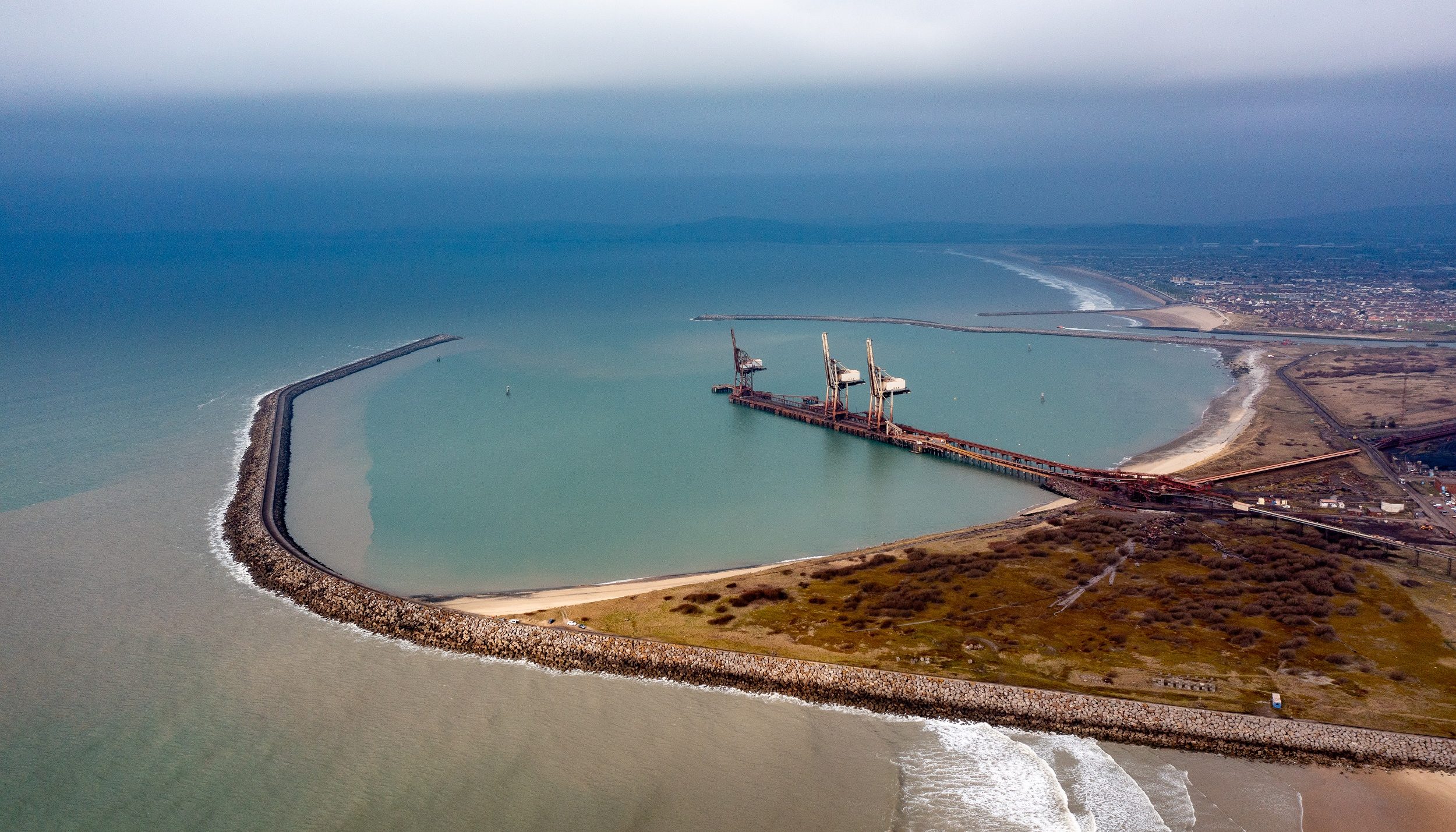Associated British Ports (ABP) was delighted to welcome Maritime Minister, Lord Byron Davies, to ABP’s port at Port Talbot on Friday 5 April, for a site tour and to learn more about ABP’s ambitious plans to transform the port into a major hub for Floating Offshore Wind (FLOW) and wider green energy developments.
Graeme Power-Hosking, the Head of the Future Port Talbot Programme, highlighted how ABP plans to transform the port into a major hub for the manufacturing, assembly and integration of FLOW components for projects in the Celtic Sea. Through planned investment of more than £500m by ABP, the Future Port Talbot Programme will unlock £1bn of investment in Port Talbot and the surrounding areas.
This was a timely visit following the recent decision by the UK Government’s Department of Energy Security and Net Zero to advance the Future Port Talbot Programme to the Primary List phase of the Floating Offshore Wind Manufacturing Investment Scheme (FLOWMIS), and provided Lord Davies with the opportunity to witness first-hand the potential of the port for the renewable energy sector.
Discussions encompassed crucial topics such as infrastructure development, environmental sustainability, and the integration of innovative technologies to enhance operational efficiency.
Commenting on the visit, Graeme Power-Hosking, Head of ABP’s Future Port Talbot Programme stated: “We are delighted to have had the opportunity to host Lord Davies in Port Talbot so he could see first-hand how the port has the scale and technical capabilities to unlock the opportunity of Floating Offshore Wind in the Celtic Sea. It is collaborative initiatives like the Future Port Talbot Programme, that are leading the charge in this major growth opportunity for the UK, with its potential to create a world-class manufacturing and supply chain hub in South Wales.”
Julian Walker, Regional Director, Wales and Short Sea Ports added: “The significant investment ABP is making in Port Talbot will serve as a catalyst for wider economic regeneration in the South Wales industrial cluster, and is part of a ABP’s broader commitment to invest in new infrastructure to support the UK’s clean energy transition, and as part of our sustainability strategy – Ready for Tomorrow.
Lord Davies, Maritime Minister at the Department for Transport said: “Port Talbot is on the cutting edge of transformation and ABP’s plans to transform South Wales by decarbonising port operations and creating greener energy using offshore wind is the key to a successful future.
“Not only will ABP’s pioneering work boost investment, but it will also create thousands of green jobs, improve coastal towns that are crucial to the UK and help build a sustainable industry fit for the future – I look forward to seeing its progress.”
The visit of Lord Davies to the Port of Port Talbot marks a significant milestone in ABP’s journey towards realising the ambitious goals outlined in its Future Port Talbot Programme. It supports ABP’s wider plans, set out in its sustainability strategy, to invest £2 billion into decarbonising its own operations by 2040 as well as supporting large-scale green energy infrastructure and industrial decarbonisation projects. These other projects include major green ammonia / hydrogen and CCS projects in the Humber and offshore wind projects in the Humber and East Anglia amongst others.
For more information please contact:
Hannah Kitcher
Regional Communications Manager (WSSP)
Mob: 07843 977827
Email: hannah.kitcher@abports.co.uk
Tim Morris
Head of Corporate Communications
Mob: 07850 501903
Email: tim.morris@abports.co.uk
About ABP Wales
ABP’s five Ports in South Wales, Barry, Cardiff, Port Talbot, Newport and Swansea contribute £1.5 billion to the UK economy every year, supporting 21,800 jobs across the UK.
• ABP’s Port of Cardiff handles around 1.8 million tonnes of cargo each year.
• The Port of Newport’s steel terminal provides over 30,000sqm of modern, covered storage dedicated to steel import and export operations.
• Port Talbot supports steel production in South Wales and handles project and heavy lift cargoes, steels and other metals, building aggregates and cargoes to support the offshore energy sector.
• Swansea is the most westerly of ABP’s South Wales ports, with the capacity to handle vessels of up to 30,000dwt and offers berths and facilities for most types of cargo.
• More than 14,000sqm of warehousing and extensive open storage facilities are available at the Port of Barry.
About ABP (www.abports.co.uk)
ABP, the UK’s leading ports group is Keeping Britain Trading with 21 ports and other transport-related businesses, creating a unique national network capable of handling a vast array of cargo.
We are driving growth, contributing £7.5 billion to the UK economy every year and supporting over 119,000 jobs. Our current investment programme promises to further increase our contribution to regional economies around the UK.
ABP is also an essential partner for the Offshore Wind industry, providing Operations and Maintenance (O&M) for ever 50% of the sector’s activity, as well as investing in infrastructure to release future renewable energy generation.
ABP in numbers:
• Handles around 90 million tonnes of cargo each year
• Owns 5,000 hectares of port estate with 1,000 hectares of open storage and 1.4 million square metres of covered storage
• Has 87km of quay
• Handles over 1.5 million vehicles every year
• Generates around 1/4 of the UK’s rail freight
• Invested over £55 million investment in low emission and renewable energy generation technologies.



























